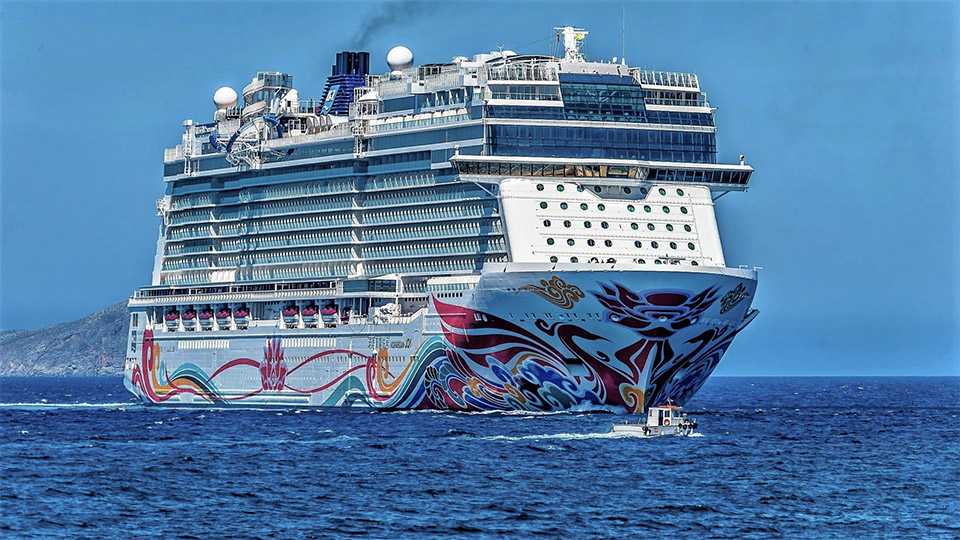Should The Philippines Ban Cruise Tourism?
Following the release of the DOT’s National Cruise Tourism Development Strategy 2016-2022 (3) in March 2016, there has been a real push to increase the Philippine’s cruise capacity. But, with cruises showing themselves to be a hotbed for the spread of the COVID-19 virus, the question remains:
Should the Philippines ban Cruise Tourism?
The Seychelles Bans Cruise Tourism
The Seychelles Tourism Minister Didier Dogley announced on 15 May 2020 that a ban had been placed on Cruise Tourism. The ban attempts to minimize a potential second wave of COVID-19. The ban is in place until the end of 2021.
The Seychelles has actually seen a minimal rate of COVID-19 infections and no deaths. However, like many destinations, where tourism is the largest source of revenue, the Seychelles has been hit hard by the travel bans in place globally. The Seychelles placed a stop on Cruise Tourism in March 2020 and has now extended the ban until the end of 2021.
COVID-19 & The Diamond Princess Lesson
On 3rd February 2020, 10 people on board the Diamond Princess tested positive for COVID-19. The infection was brought on to the ship by one person, who traveled between 21-25th January and disembarked in Hong Kong. 3,700 passengers were onboard the Diamond Princess when it was placed under quarantine.
By the 5th February all passengers were confined to their cabins in an attempt to slow the spread. By the time the passengers were allowed to disembark, 712 of them had tested positive for COVID-19. 18% of those who tested positive showed no outward or obvious symptoms.
The Grand Princess, quarantined off the coast of California, recorded 78 passengers who tested positive for COVID-19. Some of those passengers who had disembarked prior to quarantine were found to be the source of pockets of COVID-19 outbreaks in their home countries.
According to the Centers for Disease Control and Prevention more than 800 cases of laboratory-confirmed COVID-19 cases occurred during outbreaks on three cruise ship voyages. Transmission occurred across multiple voyages from ship to ship by crew members; both crew members and passengers were affected; 10 deaths associated with cruise ships have been reported to date.
Why are cruises such a hotbed for viral infections?
Professor Sanjaya Senanayake, an Infectious Diseases Specialist at the Australian National University explained:
“In general, you’ve got passengers and crew members from different parts of the world mixing intimately and intensely for a short period of time.”
Cruises are typically made up passengers from all over the World. People from different countries are exposed to different strains of illnesses in their home country. So they have different immunity. This means they are more likely to catch something from another passenger, because their body hasn’t yet built immunity to it.
Cruises also offer many communal spaces such as dining areas, swimming pools and entertainment venues. Mixing lots of different nationalities up, in confined areas, makes the spread of infections much easier too.
On top of that, Cruise Ships don’t have the same standard of air-filtration that, say, commercial planes have. Commercial Planes typically have HEPA filter air purifiers installed. These air-filters are 99.9% efficient in blocking out viruses, including the Corona Virus.
Cruise Ships are already notorious for failing to protect passengers from the types of ultra-fine particles that cause breathing difficulties, asthma and lead to Chronic Lung Disease. The particles come from the burning off of fuel used to power the ships. The particles can get lodged in the lungs, with passengers staying at the stern end of the ships at higher risk. See our article Cruise Ship Tourism Part 2: Impacts on the Environment.
2018 saw more cruise ships than ever fail cleaning and health inspections. A report by the Centers for Disease Control and Prevention showed that 15 ships out of 250 failed crucial health checks. Just 41 out of the 250 ships received perfect scores. In 2016, only 4 ships failed the health check.
Should The Philippines Also Ban Cruise Tourism?
With all the fears and worries about the second and third COVID-19 Wave being more devastating. And with the realities being that Cruises bring nationalities together in confined areas. And in an environment that fails to provide air free of fuel pollutants, let alone free of viruses. Surely, the only simple solution is to follow the Seychelles example and ban Cruise Tourism until 2021.
Check out an earlier article Cruise Tourism: Impacts on Communities and Economies which challenges the marketing rhetoric that Cruise Tourism brings money to the destinations.
Obviously it does bring in money to a destination, but not even close to the levels of spending by traditional tourists. Even when broken down to an average days spending across both groups. And the reality is that only a select few destinations businesses, which have tied in with the cruise company for tours and activities benefit financially. As much as a Cruise Company may hark on about the added economic benefit to destinations their port calls may bring, the truth is they want their passengers spending on their ships, not on dry land.






GIPHY App Key not set. Please check settings